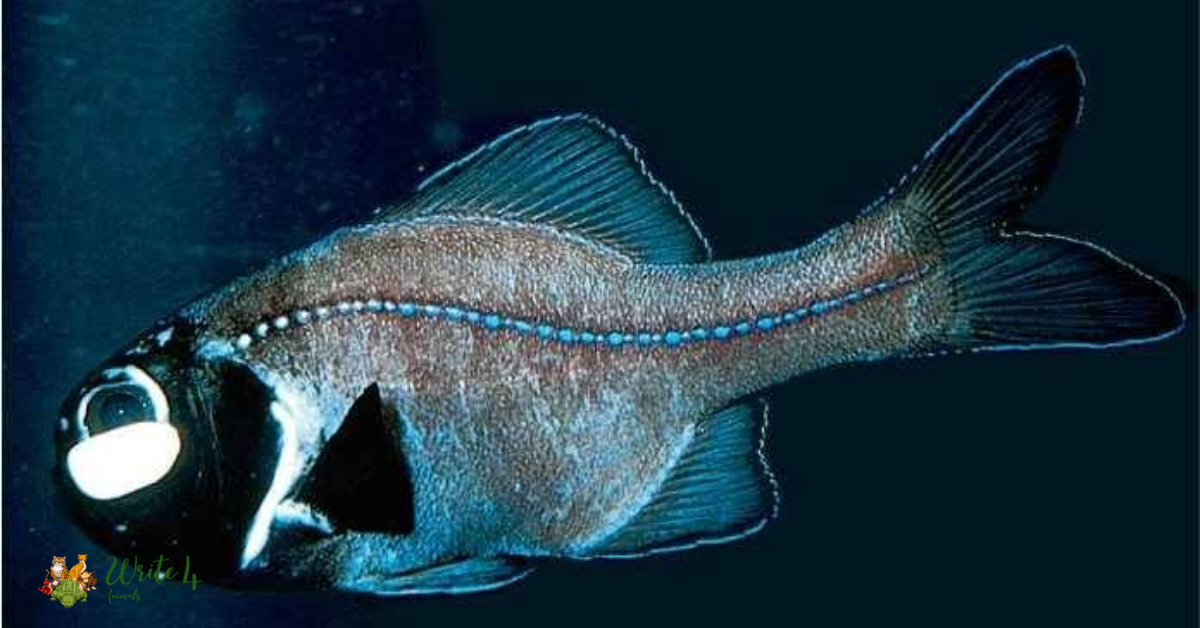The underwater world is a realm of wonders, and one of the most intriguing aspects of marine life is the incredible diversity of species that inhabit it. Among the many remarkable adaptations that marine creatures have developed, the size of their eyes is a captivating feature. Big eyes in fish serve various purposes, from enhancing their hunting abilities to surviving in the dark depths of the ocean.
In this blog post, we will dive deep into the mesmerizing world of aquatic life and introduce you to 12 fish with big eyes. Prepare to be amazed by the unique and fascinating creatures that roam the oceans with eyes that are as enchanting as they are functional.
12 Fish with Big Eyes
1. Barreleye Fish
The Barreleye Fish, scientifically known as Macropinna microstoma, is a truly astonishing creature of the deep ocean. What sets this fish apart is its transparent, fluid-filled head and large, tubular eyes.
These incredible eyes can rotate within their transparent shield, allowing the fish to look upward while swimming beneath its prey.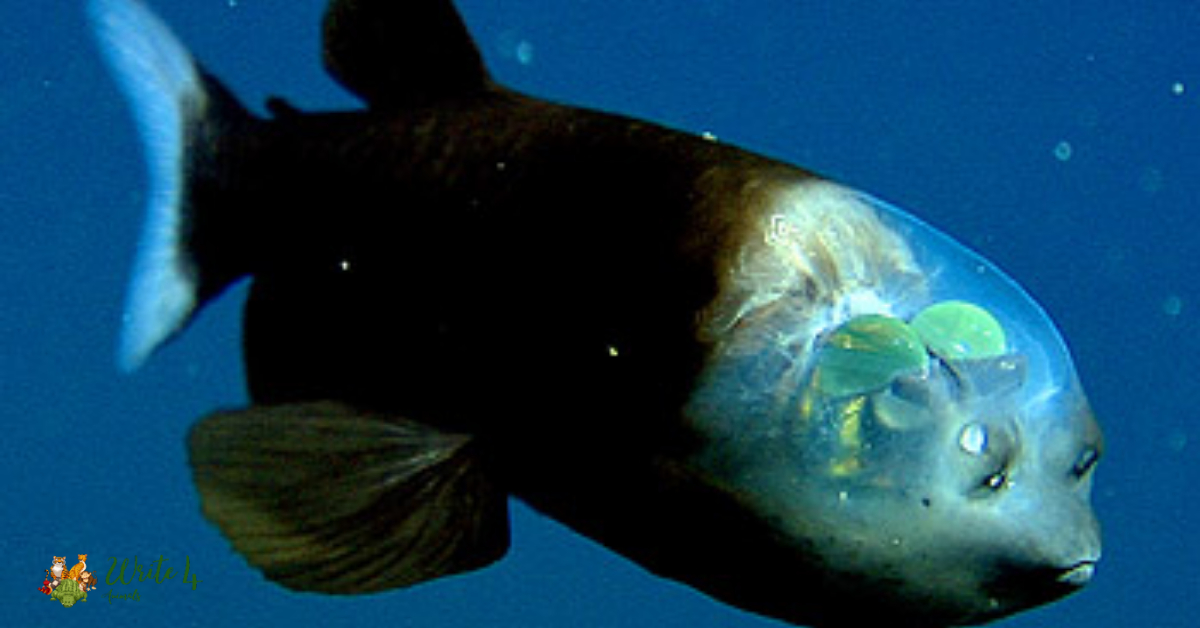 Barreleye Fish are typically found at depths of 600 to 800 meters and have adapted to survive in extreme low-light conditions. Their large, sensitive eyes help them detect the silhouettes of potential prey and navigate the pitch-black depths of the ocean.
Barreleye Fish are typically found at depths of 600 to 800 meters and have adapted to survive in extreme low-light conditions. Their large, sensitive eyes help them detect the silhouettes of potential prey and navigate the pitch-black depths of the ocean.
2. Gulper Eel
The Gulper Eel, or Eurypharynx pelecanoides, is a deep-sea dweller known for its grotesque appearance and, notably, its enormous, spherical eyes. These fish with the big eyes are crucial for locating prey in the complete darkness of the deep ocean.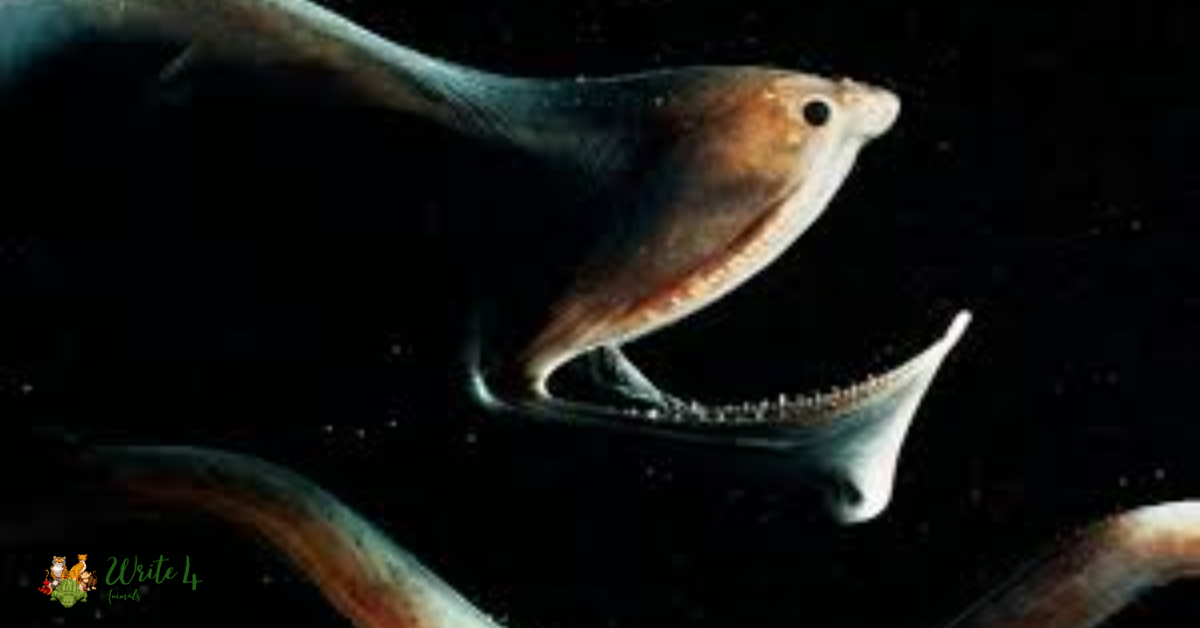 The Gulper Eel possesses a unique ability to expand its mouth to an impressive size, allowing it to swallow prey whole. This remarkable adaptation,fish with large eyes, makes the Gulper Eel an efficient predator in the depths where little to no light penetrates.
The Gulper Eel possesses a unique ability to expand its mouth to an impressive size, allowing it to swallow prey whole. This remarkable adaptation,fish with large eyes, makes the Gulper Eel an efficient predator in the depths where little to no light penetrates.
3. Bigeye Tuna
Thunnus obesus, commonly known as the Bigeye Tuna, lives up to its name with its notably large eyes that why it is also called big eyes fish. These eyes are a key asset for this species when hunting in low-light conditions, such as during dawn and dusk. Bigeye Tuna are renowned for their exceptional vision, which helps them spot prey like smaller fish and squid.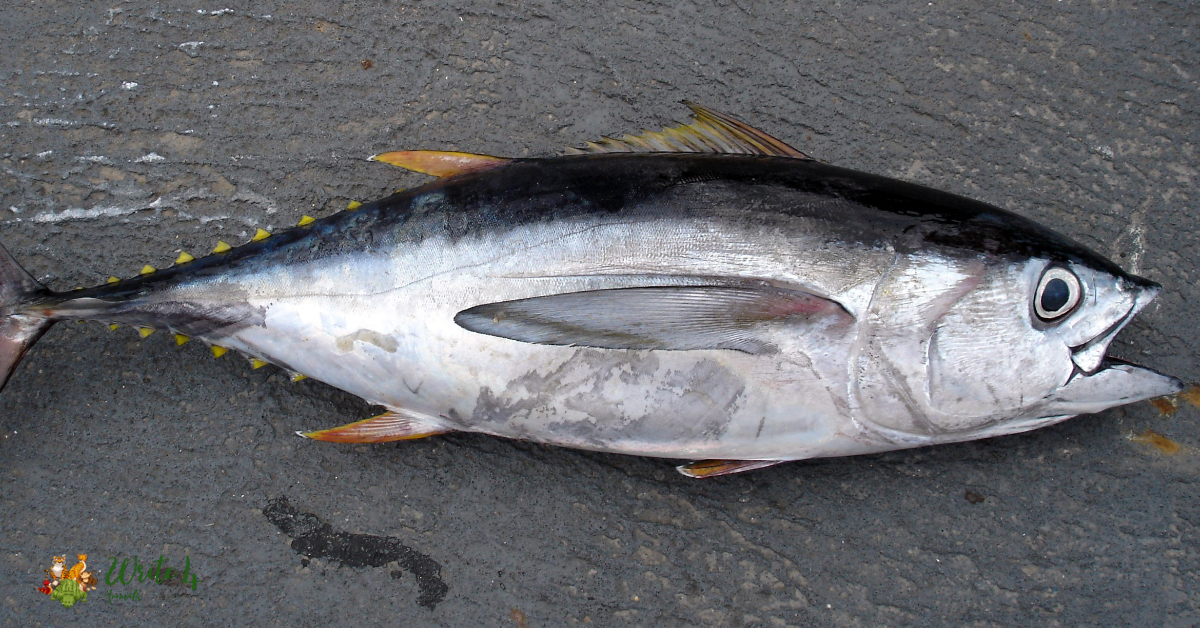 They are a prized catch for commercial and sport fishing due to their delicious meat and challenging fight when hooked.
They are a prized catch for commercial and sport fishing due to their delicious meat and challenging fight when hooked.
4. Dragonfish
Dragonfish, belonging to the Astronesthes genus, are mysterious and fascinating creatures found in the dark depths of the ocean. These fish sport dragon-like features, complete with sharp teeth and, of course,black fish with big eyes.
Their large, bioluminescent eyes are adapted to detect the faintest traces of light, allowing them to hunt effectively in the pitch-black abyss.
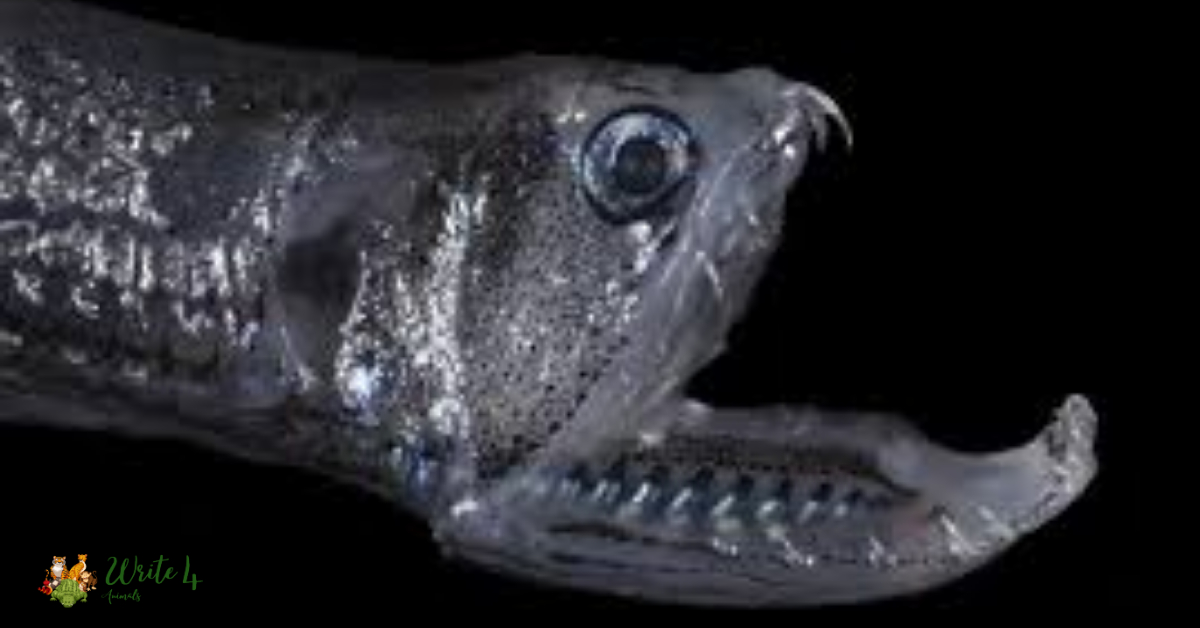 Some species of Dragonfish possess photophores that produce their own light, which they use to attract prey. These mesmerizing creatures are a testament to the adaptations that life in the deep ocean demands.
Some species of Dragonfish possess photophores that produce their own light, which they use to attract prey. These mesmerizing creatures are a testament to the adaptations that life in the deep ocean demands.
5. Hatchetfish
Hatchetfish, members of the family Sternoptychidae, are fascinating creatures that inhabit the dark depths of the ocean. These small fish have adapted to life in extreme conditions, with their most distinctive feature being their large, tubular eyes.
These eyes can rotate and adjust to different angles, allowing Hatchetfish to scan their surroundings effectively in search of bioluminescent prey.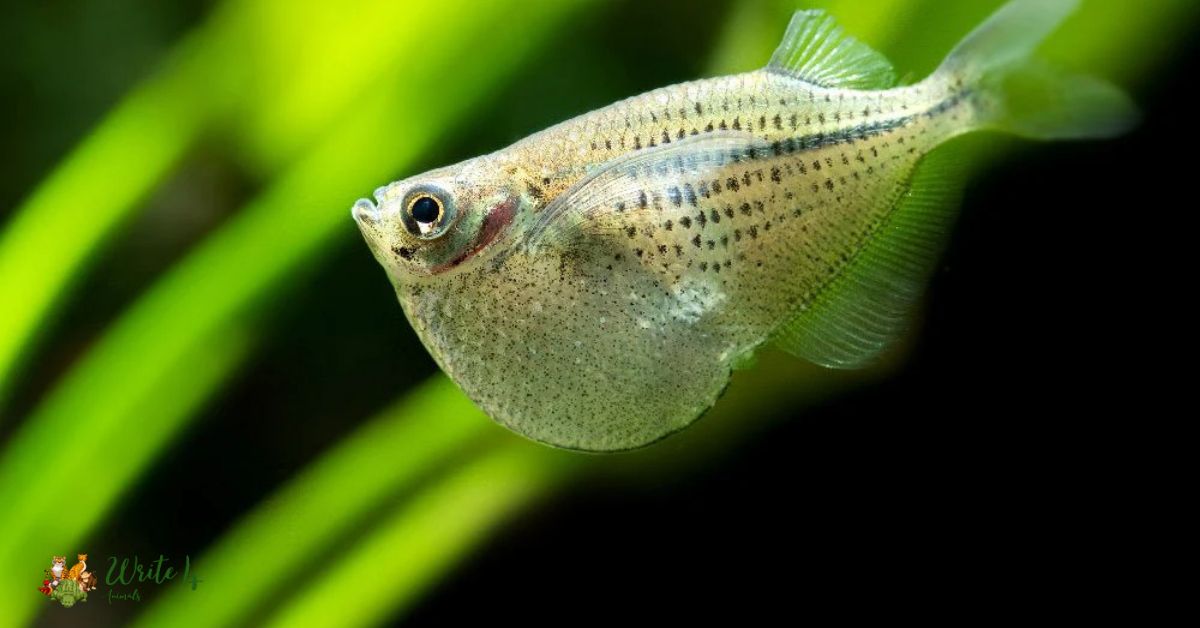 Hatchetfish are known for their unique vertical orientation, which helps them remain inconspicuous from predators swimming below. Their bioluminescent bodies emit a soft, eerie glow, which adds to their mysterious allure in the deep-sea realm.
Hatchetfish are known for their unique vertical orientation, which helps them remain inconspicuous from predators swimming below. Their bioluminescent bodies emit a soft, eerie glow, which adds to their mysterious allure in the deep-sea realm.
6. Telescopefish
Telescopefish, belonging to the Aulopiformes order, are named for their protruding, tubular eyes.This fish with the big eyes are specialized for detecting the faintest traces of light in the pitch-black depths of the ocean.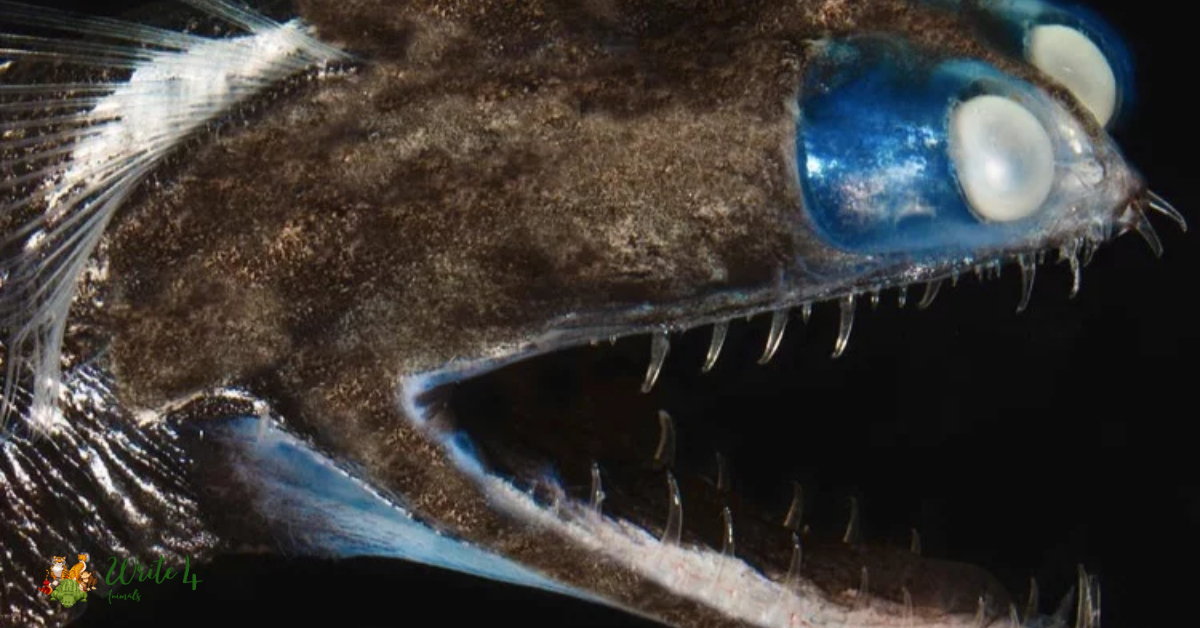 Telescopefish are known for their elongated bodies and remarkable adaptability to the extreme conditions of the deep sea. They possess bioluminescent organs along their undersides, which they use to attract prey and communicate with each other in the dark abyss.
Telescopefish are known for their elongated bodies and remarkable adaptability to the extreme conditions of the deep sea. They possess bioluminescent organs along their undersides, which they use to attract prey and communicate with each other in the dark abyss.
7. Sixgill Shark
The Sixgill Shark, scientifically known as Hexanchus griseus, is a large, enigmatic shark species characterized by its unique feature of having six gill slits (most sharks have five). These sharks possess strikingly large eyes, adapted to low-light conditions in the deep ocean. Their big eyes enable them to see in dimly lit environments and effectively locate prey.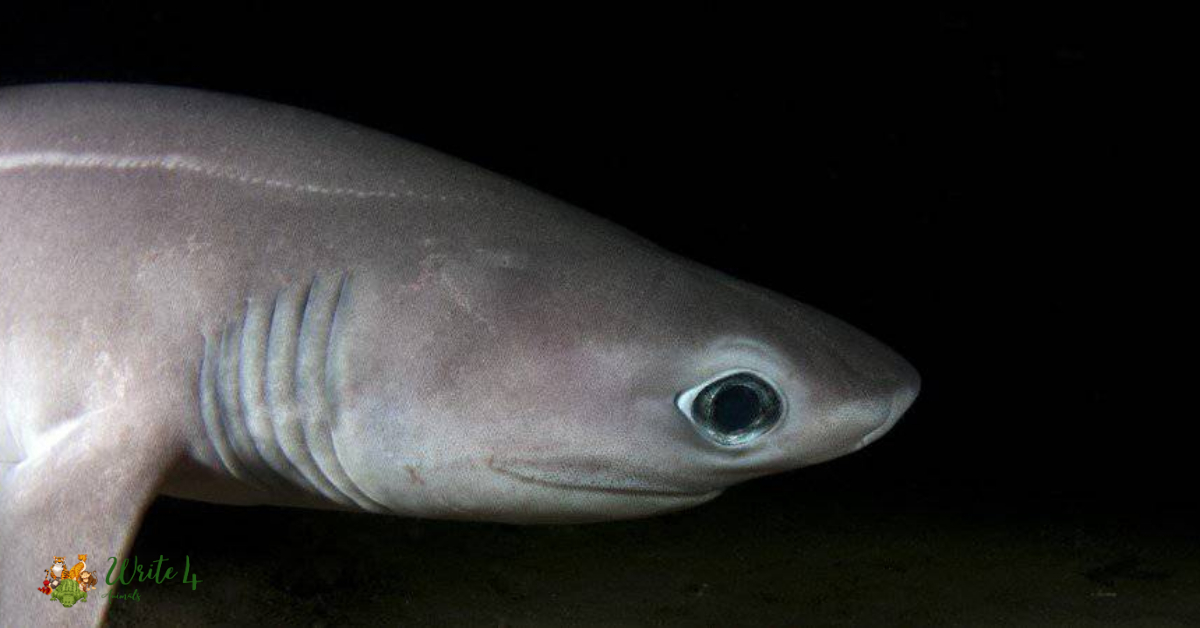 Sixgill Sharks are typically found in the deep-sea zones, often at depths exceeding 2,000 feet (600 meters), making them elusive and poorly understood by researchers. Their large eyes play a crucial role in their predatory success in the dark and mysterious depths of the ocean.
Sixgill Sharks are typically found in the deep-sea zones, often at depths exceeding 2,000 feet (600 meters), making them elusive and poorly understood by researchers. Their large eyes play a crucial role in their predatory success in the dark and mysterious depths of the ocean.
8. Threadfin Dragonfish
Threadfin Dragonfish, members of the Pteraclis velifera species, are captivating deep-sea predators known for their long, thread-like fin extensions and impressive bioluminescent displays. These fish possess large, tubular eyes that help them navigate and hunt in the pitch-black depths of the ocean.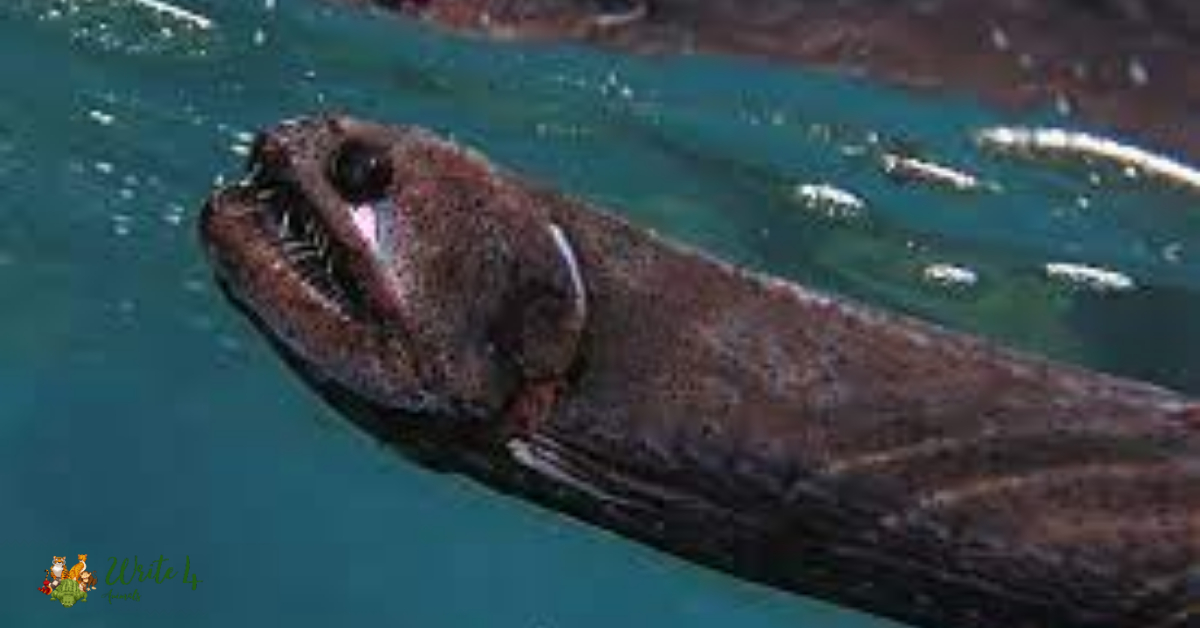 Threadfin Dragonfish are equipped with specialized photophores along their bodies, which emit bursts of light to attract prey. Their eyes play a crucial role in detecting the bioluminescent signals produced by their prey, allowing them to strike with precision. These fascinating creatures are a testament to the adaptations required for survival in the extreme conditions of the deep sea.
Threadfin Dragonfish are equipped with specialized photophores along their bodies, which emit bursts of light to attract prey. Their eyes play a crucial role in detecting the bioluminescent signals produced by their prey, allowing them to strike with precision. These fascinating creatures are a testament to the adaptations required for survival in the extreme conditions of the deep sea.
9. Flashlight Fish
Flashlight Fish belong to the Anomalopidae family and are known for their unique bioluminescent abilities. They have specialized light-emitting organs located beneath their eyes, which they can control to produce flashes of light. These flashes are used for communication, attracting prey, and confusing predators.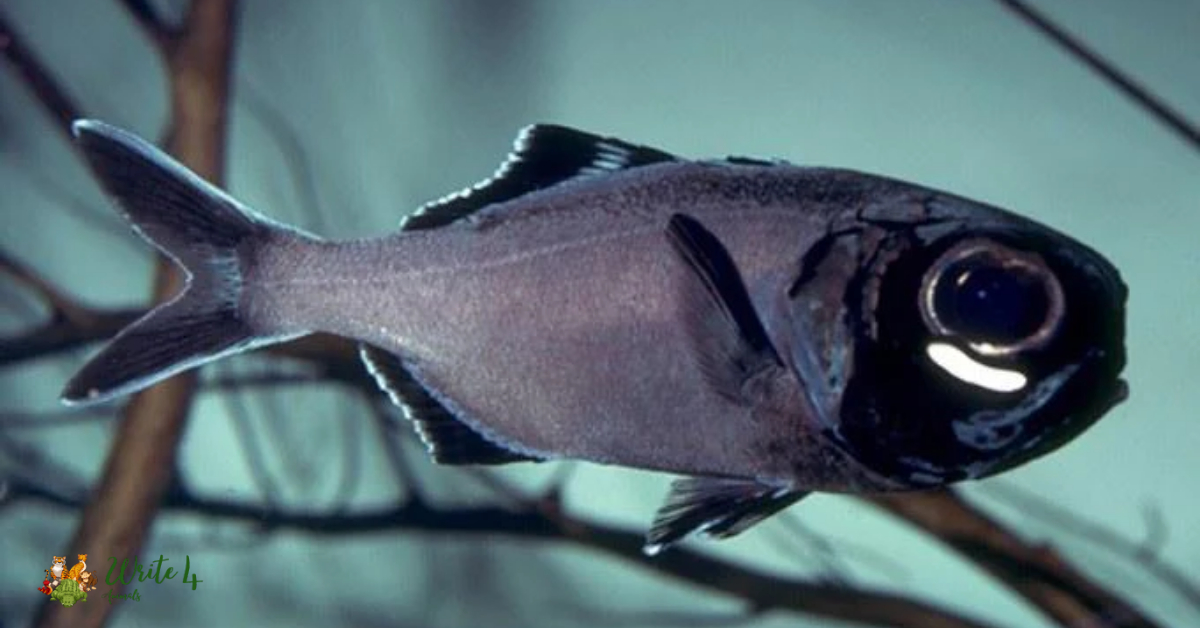 While not as large as some other deep-sea fish, their eyes are relatively large and adapted to low-light conditions. Flashlight Fish primarily inhabit the dark waters of coral reefs and caves, where their bioluminescent displays are truly mesmerizing. Their eyes play a crucial role in detecting the subtle signals of light in their habitat, allowing them to thrive in the complex and visually stunning world of the deep-sea reefs.
While not as large as some other deep-sea fish, their eyes are relatively large and adapted to low-light conditions. Flashlight Fish primarily inhabit the dark waters of coral reefs and caves, where their bioluminescent displays are truly mesmerizing. Their eyes play a crucial role in detecting the subtle signals of light in their habitat, allowing them to thrive in the complex and visually stunning world of the deep-sea reefs.
10. Glass Squid
Glass Squids are a group of fascinating cephalopods known for their translucent bodies and unique adaptations for life in the deep ocean. These squids have large, prominent eyes that enable them to detect bioluminescent prey and navigate in the dimly lit depths. Their large eyes are essential for spotting potential predators and prey alike.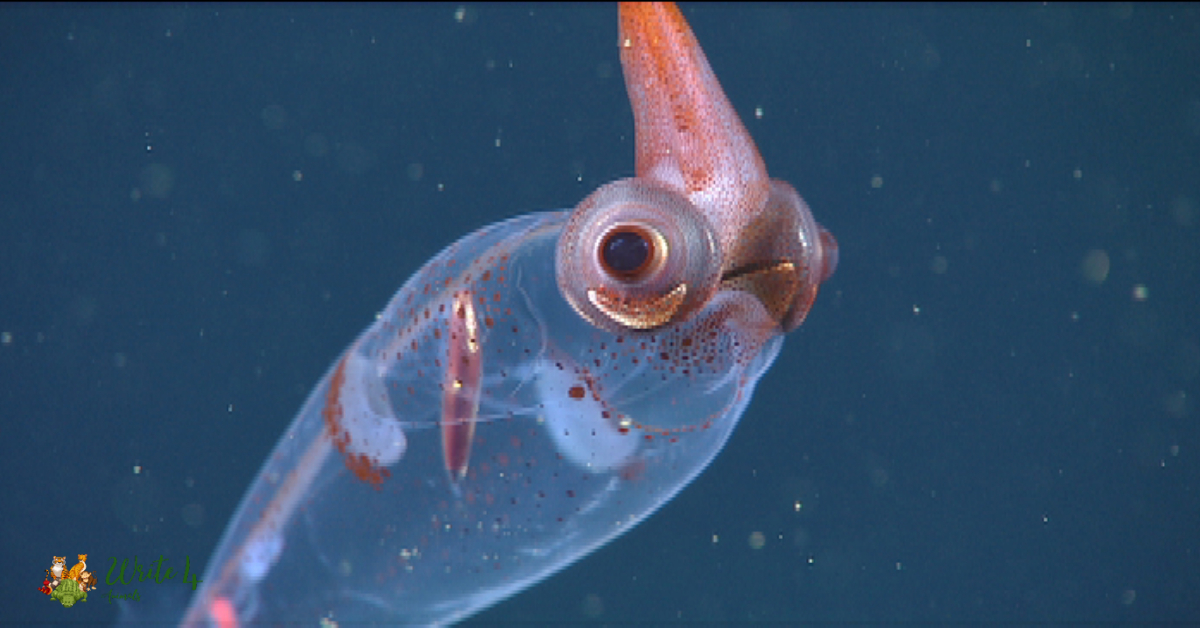 Additionally, some Glass Squid species possess photophores, which are light-emitting organs that help them remain hidden from predators below by matching the light from above, effectively rendering them invisible from below. These remarkable creatures exhibit a remarkable balance of stealth and adaptability in the mysterious world of the deep sea.
Additionally, some Glass Squid species possess photophores, which are light-emitting organs that help them remain hidden from predators below by matching the light from above, effectively rendering them invisible from below. These remarkable creatures exhibit a remarkable balance of stealth and adaptability in the mysterious world of the deep sea.
11. Deep-Sea Anglerfish
The Deep-Sea Anglerfish, belonging to various species within the order Lophiiformes, are some of the most iconic inhabitants of the abyssal depths. These anglerfish are characterized by their large, bioluminescent lure (esca) that dangles in front of their mouths. They use this lure to attract prey in the darkness of the deep ocean.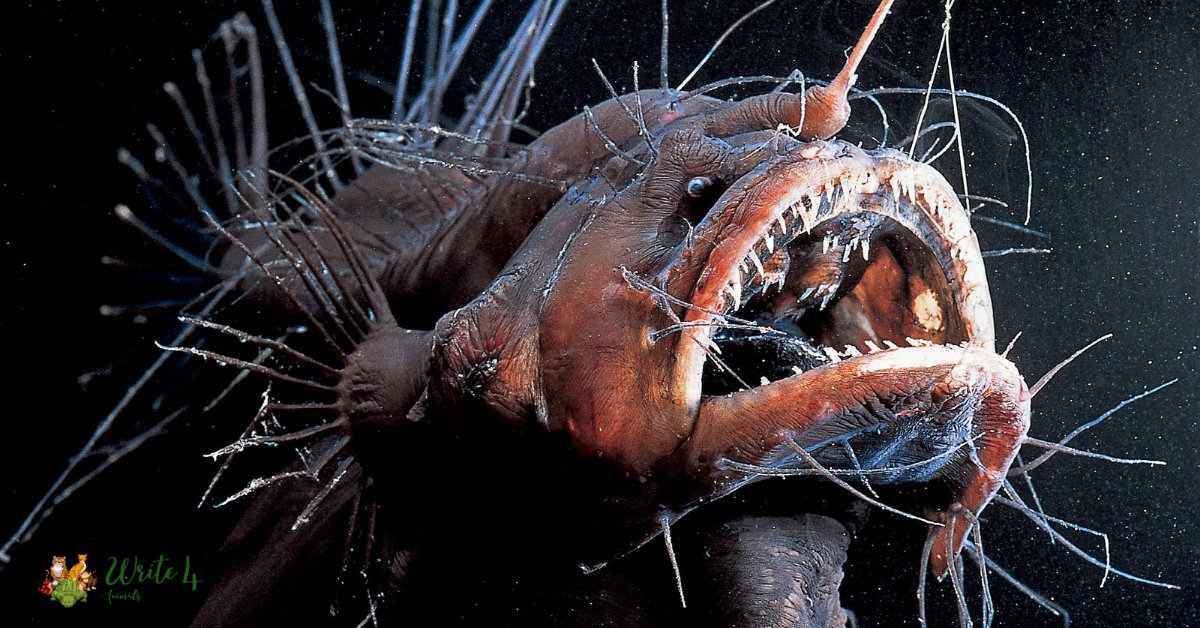 While their lure is their most famous feature, Deep-Sea Anglerfish also possess relatively large eyes adapted for detecting movement and potential prey in their surroundings. Their eyes help them hunt efficiently in a habitat where even the faintest trace of light is scarce, making them apex predators of the deep.
While their lure is their most famous feature, Deep-Sea Anglerfish also possess relatively large eyes adapted for detecting movement and potential prey in their surroundings. Their eyes help them hunt efficiently in a habitat where even the faintest trace of light is scarce, making them apex predators of the deep.
12. Fangtooth Fish
The Fangtooth Fish, scientifically known as Anoplogaster cornuta, is a ferocious-looking predator of the deep sea. Despite their small size, their disproportionately large teeth have earned them their name. These teeth, while intimidating, are not used for capturing prey. Instead, their oversized eyes are the Fangtooth Fish’s primary hunting tool.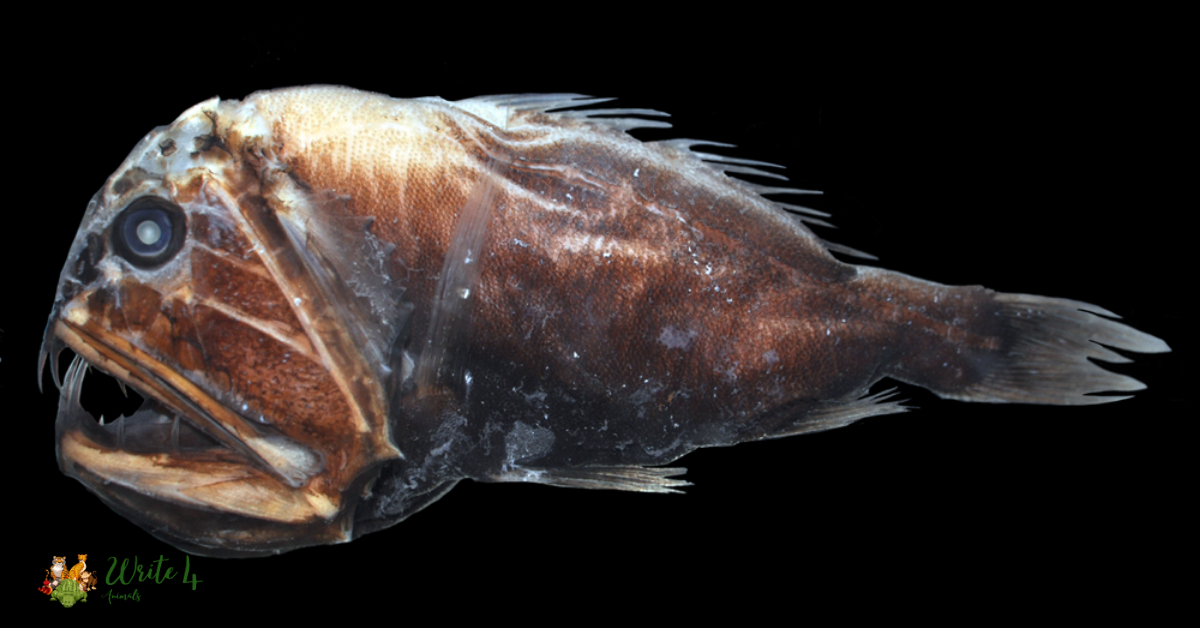 Their large eyes are adapted to detect any trace of bioluminescent prey in the dark depths, allowing them to target smaller fish, squid, and other organisms.
Their large eyes are adapted to detect any trace of bioluminescent prey in the dark depths, allowing them to target smaller fish, squid, and other organisms.
Fangtooth Fish are known to inhabit depths of over 5,000 meters, where they have evolved to thrive in extreme low-light conditions. Their unique adaptations make them formidable hunters in the mysterious world of the deep sea.
Do red fish with big eyes have any special characteristics?
Red fish with big eyes, like the red-eye tetra, showcase vibrant colors that contribute to their visual appeal. The big eyes in these species enhance their vision, helping them thrive in their natural habitats.
What is the significance of big eyes in black fish?
Black fish with big eyes, such as the black ghost knifefish, often inhabit dimly lit environments. The large eyes are an adaptation to low-light conditions, allowing these fish to effectively navigate and hunt during the night.
Why do goldfish have big eyes?
Goldfish have big eyes as part of their evolutionary adaptation. These eyes aid in detecting food, predators, and changes in their environment. The iconic appearance of goldfish eyes also adds to their popularity among aquarium enthusiasts.
Frequently Asked Questions
[sc_fs_multi_faq headline-0=”h4″ question-0=”What is the purpose of big eyes in fish?” answer-0=”Big eyes in fish serve various purposes, including enhancing their vision in low-light conditions, helping them detect bioluminescent prey, and improving their hunting abilities in the deep sea.” image-0=”” headline-1=”h4″ question-1=”Do all fish species have big eyes?” answer-1=”No, not all fish species have big eyes. The size and shape of a fish’s eyes can vary greatly depending on its habitat and hunting strategies.” image-1=”” headline-2=”h4″ question-2=”Which fish species have the largest eyes relative to their body size?” answer-2=”Some of the fish species known for having the largest eyes relative to their body size include the Glass Squid, Deep-Sea Anglerfish, and some species of Dragonfish.” image-2=”” headline-3=”h4″ question-3=”How do fish with big eyes adapt to low-light environments?” answer-3=”Fish with big eyes often have specialized adaptations, such as increased light-sensitive cells (rods and cones) in their retinas and larger pupils, to improve their vision in low-light conditions.” image-3=”” headline-4=”h4″ question-4=”Are big-eyed fish found in freshwater environments, or are they mostly in the ocean?” answer-4=”While some fish in freshwater environments have relatively large eyes, many fish with exceptionally large eyes are found in the dark depths of the ocean.” image-4=”” count=”5″ html=”true” css_class=””]
Recommended
1. Top 10 most annoying animals in the world
2. Light Skin Dog: Meme, Stare and complete information
